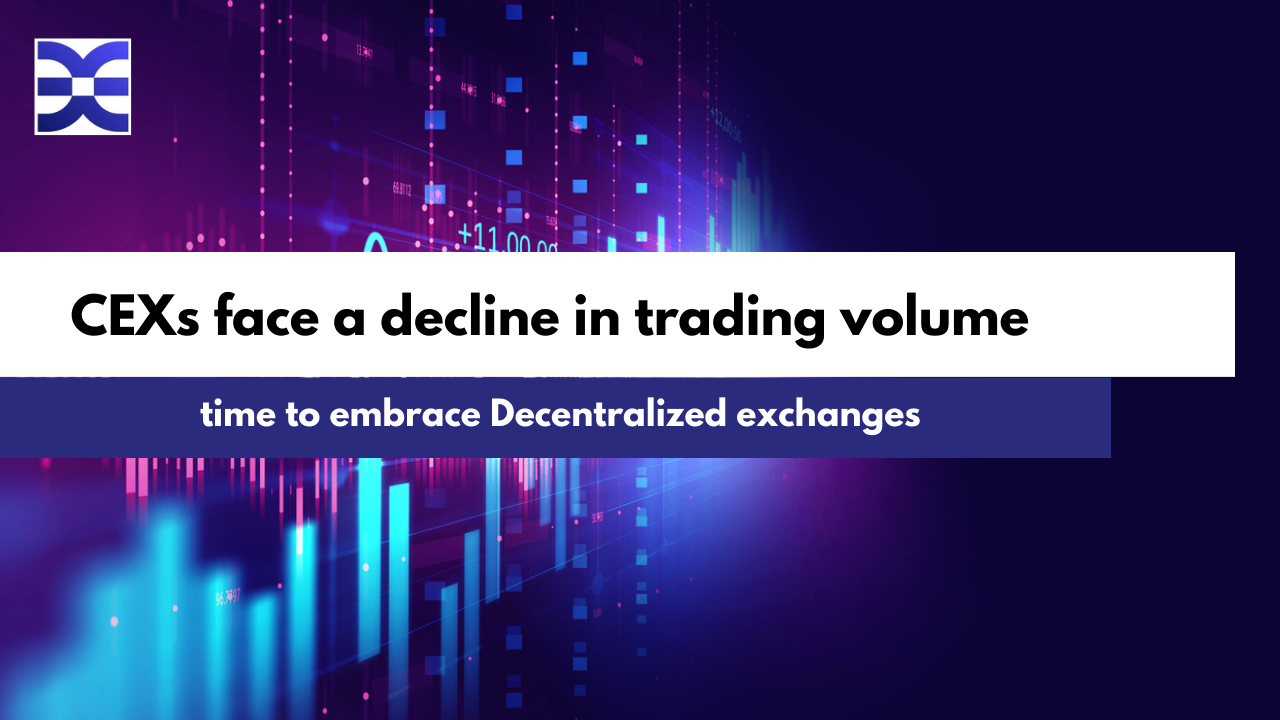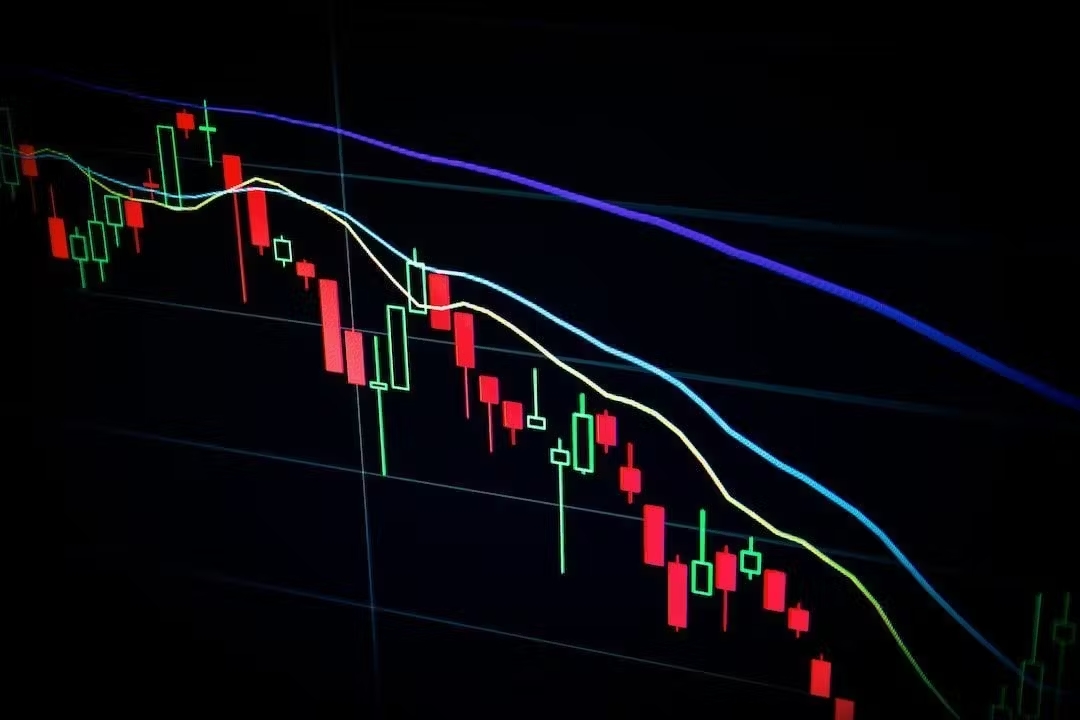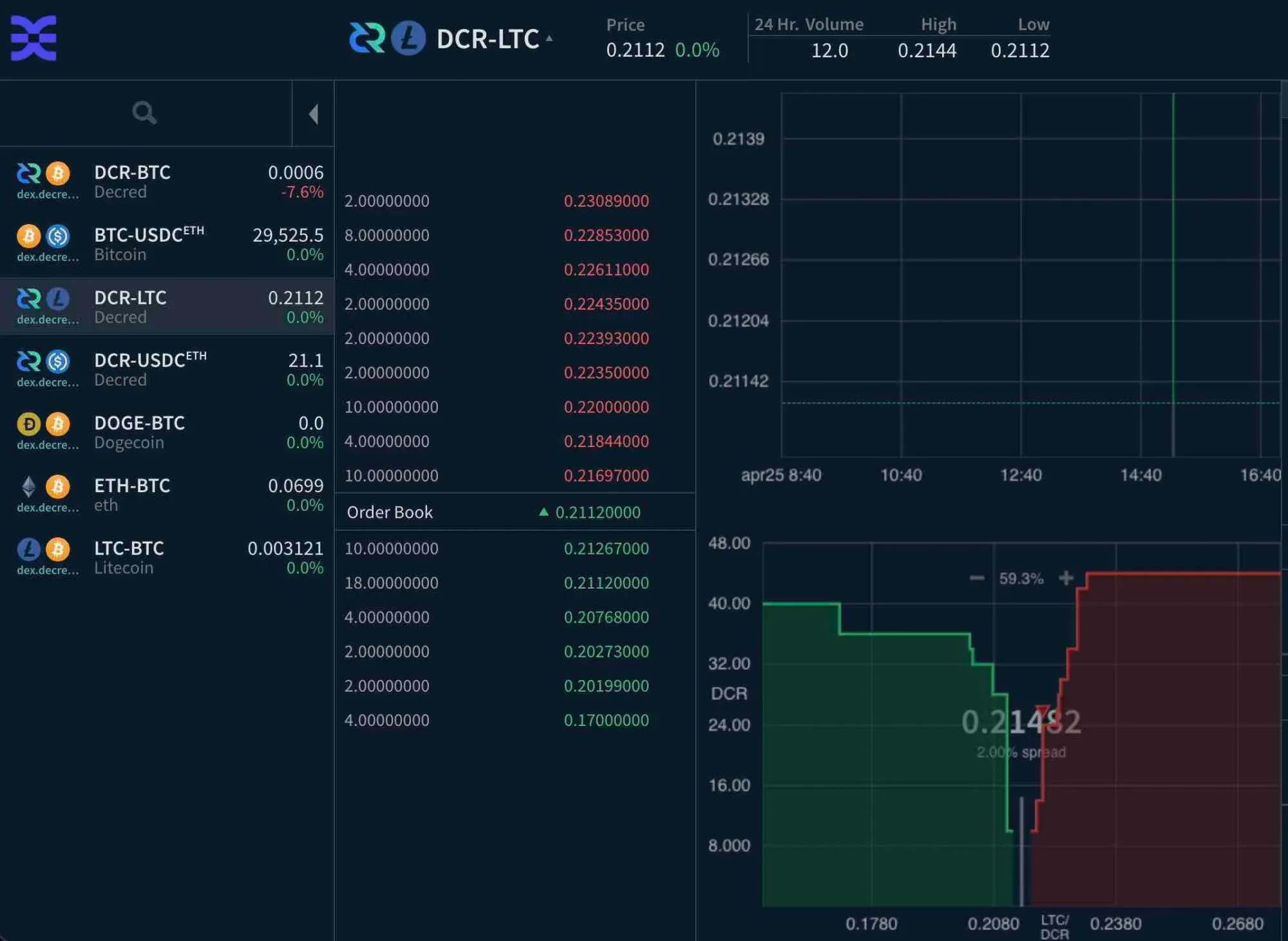CEXs face a decline in trading volume; time to embrace Decentralized exchanges
DEX adoption is at an early stage compared to CEXs which hold a dominant market share. But the rising interest in decentralized exchanges is the dawn of a new crypto-economy that doesn’t rely on trusted parties.


Since the inception of DeFi, there has been a subtle strife between centralized exchanges (CEX) and it decentralized alternative – DEX. Centralized exchanges are privately owned organizations that allow traders to buy, sell and swap crypto assets. CEXs use a similar business model to traditional stock exchanges. These exchanges connect buyers and sellers by collecting and matching their orders through a system called “order book” – which is a list of open buy and sell orders, including volume and price. Additionally, all transactions are processed within the exchange’s database (and can’t be tracked on-chain), which compels users to rely entirely on the exchange for the entire transaction process. On-chain transactions happen only when a user sends to or receives crypto assets from an external address. Centralized exchanges generally take custody of your crypto asset – this means when you deposit your crypto asset into any CEX, you lose a large amount of control over them, which is why it’s advisable not to HODL your crypto assets in an exchange.
CEXs were once the go-to for crypto trading
When it relates to crypto trading, centralized exchanges hold a big share of the market volume. As of February 2022, consulting giant – KPMG reported that centralized exchanges were accounted for around 95% of exchange crypto trading. One of the key factor to crypto users adopting CEX was its user-friendly UI/UX, which generally, is crucial for any product. However, despite the dominating presence of centralized exchanges, they also usher in some irking disadvantages that not only lay financial burdens on users but also act as roadblocks to the growth of crypto adoption.
Transparency problem
An evident con to using CEX is that users need to give up custody of their crypto assets to a CEX, but it becomes more disadvantageous when the operations of the exchange can’t be easily audited by the public (unlike DEXs), in essence; users can’t truly verify what happens to their crypto assets once a deposit has been made. A notable example of this is the insolvency of FTX that made many users part ways with their portfolios. The once largest crypto exchange fell to its knees on November 2 2022, after a report from a crypto news site; Coindesk revealed that its sister company – Alameda Research was facing potential insolvency. The report prompted concerns in the crypto community as users became uncertain if the rumors were true or just FUD. On Nov. 7, FTX announced that it was facing liquidity crisis and seeking a bail out. In the following days, the exchange filed for bankruptcy and also experienced a hack that led to the loss of over $477 million in customer funds.
But FTX isn’t alone in the list of centralized exchanges that are lacking transparency, South Korea based exchange – Coinone had some of it executives indicted in relations to listing scandal and market manipulation amounting to 2.98 billion Korean won ($2.26 million).
CEX trading volumes fall to a 4-year low

With the recent crisis involving top crypto exchanges – Binance and Coinbase; crypto users are beginning to adopt decentralized exchanges as they offer a transparent and trustless approach to crypto trading. Review from crypto analytics firm – CCData reports that trading volume in CEX (spot and derivatives combined) fell by 15.7% in May, following a spot volume decrease of 43.8% in April. The data presented by CCData does not take into account the recent SEC lawsuits against Binance and Coinbase.
DEX trading volumes increase by 444%
Despite the awry decline in CEX trading volume, decentralized exchanges have been a safe haven for crypto traders. Data from crypto aggregator – Coingecko shows that total daily volume on decentralized exchanges have increased by $700 million in the past few days, following the recent legal actions against Binance and Coinbase. Although some crypto traders still prefer to use CEX due to its user-friendly interface, the growing traction on DEX would lead to DeFi builders improving the swapping experience, thus, making it a fitting competitor against centralized exchanges.
Unlike CEX, decentralized exchanges are built on the blockchain and operate as a self-executing smart contract. These DApps enable trustless peer-to-peer transactions without taking custody of users crypto assets. Usually users would need to connect their wallet to the DEX before a trade can be processed. There are four kinds of DEXs – Automated Market Maker (e.g Uniswap, Pancakeswap, Raydium), Orderbook-based DEX (Bitswap, IDEX), DEX aggregators (1inch) and P2P DEX (DCRDEX).
DCRDEX 0.6

DCRDEX is a decentralized exchange that facilitates cross-chain swap via a model called Atomic swaps – these are smart contracts which make it possible to trade crypto assets from two blockchains without having to rely on a third party. Unlike AMM based DEX, DCRDEX doesn’t rely on a centralized liquidity pool but directly connects buyers to sellers based on matching trades. Trades are processed on-chain with no direct reliance on the DEX, giving users complete control over their assets.
The recent DCRDEX 0.6 offers some interesting features, one of which is its new interface which makes the DEX suitable for more devices including mobile. Another notable upgrade is the support for Ethereum and stablecoin pairs; supporting Ethereum allows users to trade between crypto projects (BTC, ZEC, DCR) and Ethereum without risking the safety of their crypto assets. Ethereum is not the only new asset coming to DCRDEX; Polygon, Digibyte, Firo and Dash pairs are also being supported. Other intriguing features include arbitrage bot, maker bot, fidelity bonds and new built-in wallets.
Final Thoughts
DEX adoption is still in its early stage compared to CEXs which hold a dominant market share, however, the rising interest in decentralized exchanges would outset the dawn of a new crypto-economy that doesn’t rely on central bodies. Since 2020, many DEXs have been built with some constantly being upgraded to suit its users. Centralized exchanges will have to work harder to retain its users (or atleast provide more clarity). Until this is done, the transit from centralized to DEXs would only continue to increase.





Comments ()